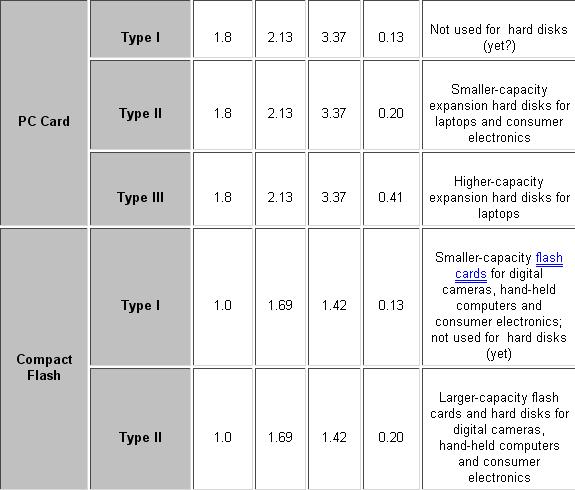Form Factors of hard disk drive
Most hard disks are designed to be installed on the inside of the PC, and are produced in one of a dozen or so standard sizes and shapes. These standards are called hard disk form factors and refer primarily to its external dimensions. The reason for standardizing on form factors is compatibility. Without these standards, hard disks would have to be custom-made to fit different PCs. By agreeing on standards shapes and sizes for hard disks–as well as standard interfaces of course–it is possible for any of the thousands of PC makers to purchase units from any hard disk manufacturer and know that there won’t be problems with fit or form during installation.
Over the life of the PC there have only been a few different hard disk form factors. Since changing a form factor standard requires coordination from the makers of other components (such as the makers of system cases) there is resistance in the industry to change the standard sizes unless there is a compelling reason to do so. (For example, when laptop PCs became popular new, smaller drives were created to save space and power, important goals in the world of mobile computing.)
Form factors are generally described by a single metric. For example, the most common form factors today are “3.5-inch” and “2.5-inch”. These numbers generally refer to the width of the drive, but they can be both vague and misleading (nice, huh? ) They usually were chosen for historical reasons and in typically were based on either the platter size of drives that use the form factor, or the width of drives using that form factor. Obviously a single number cannot represent both, and in some cases, it represents neither! For example, 3.5″ hard disks are generally 4″ wide and use 3.74″ platters. (The name in this case comes from the fact that the drives fit in the same space as a 3.5″ floppy disk. drive!) Much more about the relationship between form factors and platters can be found in the discussion of platter size in the media section. You will also find there a detailed description of the trend towards smaller platters in modern hard disks.
The five most popular internal form factors for PC hard disks. Clockwise from the left: 5.25″, 3.5″, 2.5″, PC Card and CompactFlash.In this section I examine the major form factors that have been used for internal hard drives in PCs. This includes details on the dimensions of the form factor, especially the different heights associated with each. (Most form factors are actually a family of form factors, with different drives varying in the height dimension). In addition to the standard internal drive form factors, I briefly discuss external drives and also removable drive trays, which are sort of a “hybrid” of internal and external designs.
For ease of comparison of Form Factors, the summary table below lists all of the standard internal hard disk form factors with their dimensions, typical platter sizes found in hard disks that use the form factor, and common applications:
Note: There may be drives available in form factors other than those listed here.
Data recovery Salon welcomes your comments and share with us your ideas, suggestions and experience. Data recovery salon is dedicated in sharing the most useful data recovery information with our users and only if you are good at data recovery or related knowledge, please kindly drop us an email and we will publish your article here. We need to make data recovery Salon to be the most professional and free data recovery E-book online
World’s Top Data Recovery Hardware Tools

Easy to use at good price
Recover SATA, IDE, External HDDs, NVME SSDs, etc Order Now here
POTABLE DEVICE & NVME SSD RECOVERY TOOL

Recover USB Device and NVME SSDs at high speed! Read Details here.
DFL-PCIE DATA RECOVERY RECHARGE

Best data recovery hardware tool to start a data recovery business, read details here
RECOVER SCRATCHED HDDS

Recover lost data from scratched hard drives, read details here.
SURFACE PRO. RECOVERY
BEST HEAD REPLACEMENT TOOLS

The most cost-effective head replacement tools for Seagate, WD, Samsung, Hitachi, Toshiba, Fujitsu





